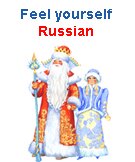 |

|
PavlovskPavlovsk is a St. Petersburg’s southern suburb, lying 30 km of the Russia’s second capital. It is the site, on the Slavyanka River, of a country residence gifted by Catherine the Great to her son and heir, Emperor Paul. Founded in 1777 as Pavlovskoye, it became a town and was renamed Pavlovsk in 1796, when Paul was proclaimed the Emperor. While less touristy than Petrodvorets or Pushkin, Pavlovsk is still a great place of interest, noted for the palace and one of the world’s largest (1,500 acres) landscape parks. Most of the Great Palace, a domed, rectangular structure, was built in 1782-86 by the Scottish architect Charles Cameron, who was commissioned by Catherine the Great. Later, the other great architects Giacomo Quarenghi and Karl Possi made changes and additions to Cameron’s original scheme. The Great Palace, which is probably the most intimate of all Tsar’s palaces, features exquisitely designed gala and private rooms full of the authentic rare objects: furniture sets, tapestries, clocks and china.
Last update: 01.06.2006
|
© 2015 COMINTOUR
|
Tel.: 007 (812) 324-54-78
Fax : 007 (812) 740-13-12 E-mail: cominto@mail.wplus.net  Designed by — WebCom ART Designed by — WebCom ART
|



